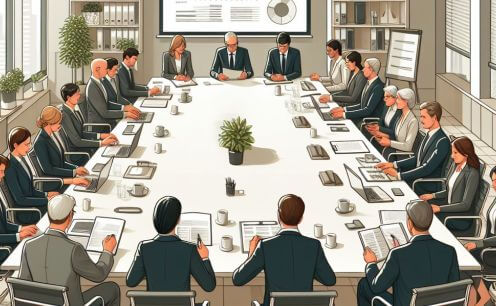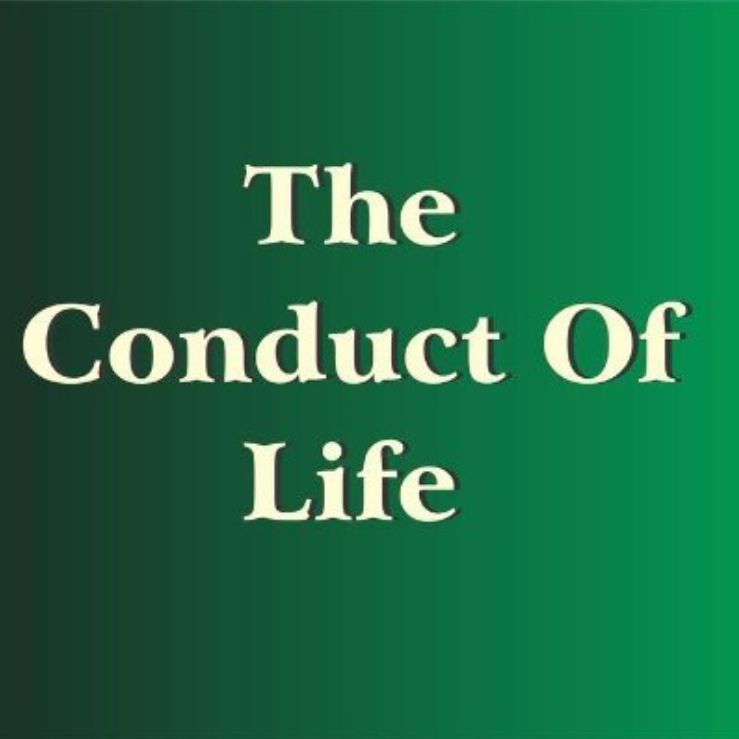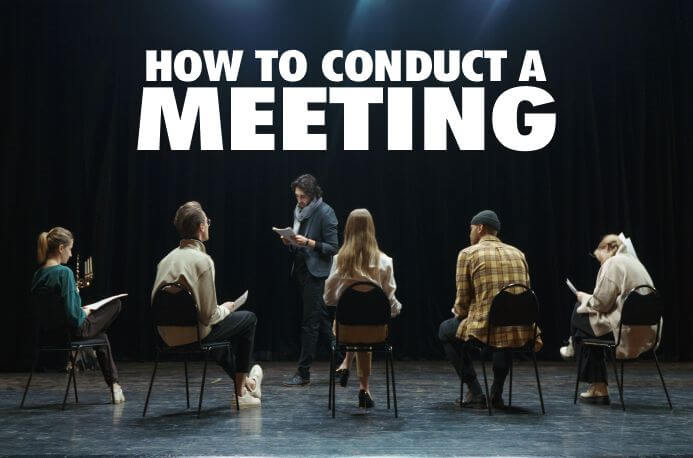Last updated on February 25th, 2025 at 04:14 pm
How to conduct a meeting is a required skill for anyone who wishes to be competent in leadership in the workplace, organizations, conferences, or discussions.
Meetings are an indispensable aspect of professional and organizational life.
Whether it is a small team huddle or a large-scale conference, the success of a meeting lies in efficient planning and execution with the chairman giving directives.
However, poorly conducted meetings can waste time, hinder productivity, and erode motivation among participants.
To conduct a productive and impactful meeting, it is important to understand and implement proven strategies that encourage engagement, collaboration, and meaningful outcomes.
This comprehensive guide explores the key elements and best practices for conducting effective meetings to ensure that every meeting you lead contributes to overall success.
Recommended: The Right Way To Take Meeting Notes
Table of Contents
- What is a Meeting?
- What is a Meeting?
- Pre-meeting Preparation
- How to Conduct a Meeting Step By Step
- Post-meeting Actions
- Frequently Asked Questions
- How to Conduct a Meeting with Staff
- Final Thoughts
What is a Meeting?
What is a Meeting?
A meeting is a gathering of individuals with a common purpose to discuss, deliberate, or make decisions on specific topics.
It serves as a platform to exchange ideas, share information, and collaborate towards achieving a common goal.
Meetings can be formal or informal, depending on the nature and importance of the discussion.
Typically, meetings involve participants who have a vested interest or expertise in the subject matter being discussed.
They may take place in person, virtually, or through teleconferences.
Effective meetings require careful planning, clear communication, active participation, and efficient time management to ensure productive outcomes.
Related: The Roles of the Secretary in Conducting a Meeting
Pre-meeting Preparation
Pre-meeting preparation is the activities and steps taken before a meeting to ensure that it is productive and efficient.
These steps include defining the purpose and objectives of the meeting, determining the participants and invitees, creating an agenda, and gathering necessary resources and materials.
Defining the Purpose and Objectives of the Meeting
- Clearly articulating why the meeting is necessary and what it aims to achieve helps set the tone and expectations for the participants. It ensures everyone understands the reason behind the meeting and its importance.
- Setting specific objectives helps guide the discussion and drive outcomes. These objectives should be measurable and concrete, serving as a roadmap for the meeting. They should be established based on what needs to be accomplished during the meeting.
Determine the Participants and Invitees
- Identifying who needs to be present and who can contribute meaningfully to the meeting helps ensure that the right people are involved. Consider the roles, responsibilities, and expertise of potential participants and invite those who can provide valuable insights or make important decisions.
- Sending out invitations with the agenda and any relevant pre-reading materials allows participants to come prepared. This ensures that everyone is on the same page and can contribute effectively to the meeting.
Creating an Agenda for the Meeting
Developing a structured agenda is crucial for a successful meeting.
It outlines the flow of the meeting and ensures that all necessary topics are covered within the allocated time.
Prioritizing the discussion topics based on relevance and urgency helps ensure that the most important and time-sensitive items are addressed.
This prevents the meeting from derailing or running out of time before important issues are discussed.
Gather Necessary Resources and Materials for the Meeting
Ensuring the availability of any required technology, visual aids, or supporting documents is essential for a smooth meeting.
Test the technology and prepare any materials or equipment needed beforehand to avoid any disruptions during the meeting.
Distributing materials in advance allows participants to familiarize themselves with the content and come prepared with any questions or suggestions.
This enables a more productive and informed discussion during the meeting.
How to Conduct a Meeting Step By Step

To conduct a meeting, the chairman or anybody assigned with such authority has to take charge and carry everybody along.
Let’s take a look at the steps involved.
1. Start with an Icebreaker or a Brief Introduction
Conducting the meeting involves the chairman taking charge and guiding the participants towards productive and meaningful discussions.
By starting with an icebreaker or introduction, a welcoming atmosphere is created, encouraging participants to contribute and engage actively.
This helps in breaking the ice and building rapport among the attendees.
2. Set Ground Rules and Expectations
Setting ground rules and expectations establishes guidelines for participation and ensures that all participants feel heard and respected.
By encouraging open and honest communication, it creates a safe space for individuals to share their opinions and ideas.
3. Follow the Agenda and Manage Time Effectively
Following the agenda and managing time effectively is crucial to keep the meeting on track and prevent it from becoming sidetracked.
By sticking to the planned agenda and appointing a timekeeper, focus is maintained, and all agenda items can be addressed within the allotted time.
4. Encourage Participation and Engagement
Encouraging equal participation ensures that everyone’s input is valued and taken into consideration.
It prevents certain individuals from dominating the conversation and allows for a more inclusive and collaborative discussion.
Here are ways to achieve that:
Ensure that everyone has an opportunity to speak and participate in the discussion.
Avoid dominating the conversation or allowing certain individuals to monopolize the meeting.
5. Encourage Collaboration and Problem-solving
Encourage the exchange of ideas and input from all participants. Facilitate discussions that lead to consensus and decision-making, involving everyone in finding solutions.
6. Manage Conflicts and Disruptions
Address any conflicts or disruptions that arise during the meeting promptly and respectfully.
Encourage open dialogue and work towards resolving conflicts, ensuring that everyone’s concerns are heard and acknowledged.
7. Encourage Constructive Discussions
Encouraging collaboration and problem-solving involves facilitating discussions that encourage the exchange of ideas and input from all participants.
By involving everyone in finding solutions and reaching a consensus, a more effective and meaningful outcome can be achieved.
8. Ensure Accountability and Establish Action Plain
To ensure accountability and establish an action plan during a meeting, it is crucial to assign responsibilities for action items.
Each task should be clearly defined and documented during the meeting, ensuring that everyone understands their role and what is expected of them.
Additionally, accountability can be maintained by tracking and following up on the progress of these action items in subsequent meetings.
This can include discussing any obstacles or challenges faced, providing updates on the status of tasks, and ensuring that deadlines are being met.
By holding individuals accountable and regularly reviewing progress, the meeting can effectively establish an action plan and ensure that it is being implemented.
9. Summarize and Document Keypoints
Summarizing and documenting key points and decisions at the end of the meeting ensures that the discussions and outcomes are clear and can be referred to later.
Documenting the minutes or key takeaways helps in maintaining accountability and tracking progress.
10. Follow Up on Action Plans
Following up on action items and next steps ensures that the decisions made during the meeting are implemented.
Assigning responsibility, setting deadlines, and following up on progress helps in maintaining accountability and ensuring that tasks are completed as planned.
Post-meeting Actions

Post-meeting actions are the steps taken after a meeting is concluded to ensure that the meeting’s outcomes and decisions are properly disseminated and to gather feedback for improvement.
The following are the different elements to consider in post-meeting actions:
1. Sharing Meeting Minutes and Key Takeaways
Summarizing the Main Points: The meeting minutes should provide a concise summary of the key discussion points, decisions made, and any action items that were identified during the meeting. This document serves as a reference for participants and stakeholders to remember what was discussed and what needs to be done.
Circulating the Minutes: The minutes should be shared with all participants and relevant stakeholders to ensure that everyone is aligned on the meeting outcomes and any follow-up actions that are required. This communication ensures that there is clarity and transparency regarding the decisions and responsibilities assigned during the meeting.
2. Collecting Feedback
Seeking Feedback from Attendees: It is important to ask the meeting participants for their input on the effectiveness of the meeting. This feedback can be collected through surveys, one-on-one discussions, or written evaluations. The aim is to understand what worked well and what areas need improvement.
Regularly Reviewing and Incorporating Feedback: The feedback received should be analyzed and used to enhance future meetings. By addressing any identified shortcomings or areas for improvement, subsequent meetings can become more efficient and productive.
3. Evaluating Meeting Outcomes
Reflecting on Meeting Success: It is essential to evaluate whether the meeting achieved its objectives and if the desired outcomes were attained. This assessment helps identify any gaps or areas where improvements can be made for future meetings.
Assessing Participant Impact: The impact on participants should also be evaluated. This can include measuring factors such as enhanced collaboration, shared understanding, or tangible progress towards the meeting’s goals. Understanding the effects of the meeting on the participants can help gauge its overall effectiveness.
Frequently Asked Questions
How do you run a meeting guide?
Running a meeting involves setting clear objectives, preparing an agenda, encouraging participation, managing time effectively, and following up on action items.
What is the proper way to conduct a meeting?
The proper way to conduct a meeting is to establish clear objectives, prepare an agenda, encourage participation, manage time effectively, and follow up on action items.
How do you set meeting guidelines?
Setting meeting guidelines involves defining objectives, preparing an agenda, encouraging participation, managing time effectively, and establishing follow-up procedures for action items.
What are three guidelines for conducting effective meetings?
Three guidelines for effective meetings include setting clear objectives, preparing a focused agenda, encouraging active participation, and following up on action items.
How to Conduct a Meeting with Staff
To conduct a successful meeting with staff, start by setting clear objectives and preparing a focused agenda.
Choose a suitable venue and encourage active participation from all team members.
Respect everyone’s time by managing the meeting efficiently and communicating effectively.
Encourage collaboration and teamwork, and ensure that the meeting concludes with clear action items and responsibilities.
Establish a feedback mechanism to continuously improve the meeting experience, and reflect on each meeting to adapt and enhance future gatherings.
By following these steps, you can create a productive and engaging environment for discussions, decision-making, and team alignment, ultimately contributing to the overall success of your organization.
Final Thoughts
Knowing how to conduct a meeting requires planning, skillful facilitation, and purposeful execution.
By adhering to the best practices outlined in this comprehensive guide, meeting organizers can optimize their time, resources, and participants’ contributions.
Remember, the key to successful meetings lies in establishing clear objectives, promoting participation, managing time effectively, encouraging constructive discussions, and ensuring accountability.
With these strategies in place, meetings can become powerful tools that drive organizations forward, resulting in improved collaboration, productivity, and overall success.
References
Skillsyouneed: Conducting a meeting
Your Article Library: 10 Major Duties of a Chairman in a Meeting
High-speed Training: How to Chair a Meeting Effectively
Harvard Business Review: How to Be a Better Meeting Chairman
https://www.ringcentral.com/us/en/blog/run-an-effective-meeting/
https://www.azeusconvene.com/articles/how-to-run-a-board-meeting
Pious Clements is the insightful voice behind "The Conducts of Life" blog, where he writes about life ethics, self-development, life mastery, and the dynamics of people and society.
With a profound understanding of human behaviuor and societal dynamics, Pious offers thought-provoking perspectives on ethical living and personal growth.
Through engaging narratives and astute observations, he inspires readers to navigate life's complexities with wisdom and integrity, encouraging a deeper understanding of the human experience and our place within society.

